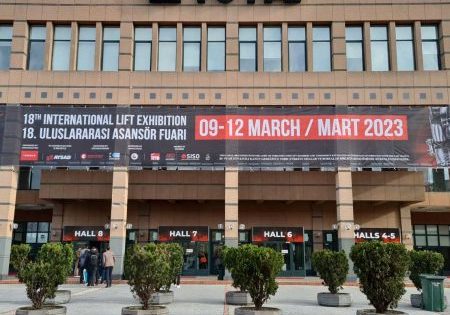The Risks of Contracting With a Dormant Company
May 30, 2023

The case presented shows the importance of checking the identity and status of proposed parties when agreeing to a contract.
In WRB (NI) Ltd. Henry Construction Projects Ltd. [2023], the court decided against granting a main contractor a stay of execution to establish its alleged crossclaims against a dormant company.
Background
Henry Construction Projects Ltd. (“Henry Construction”) were the main contractor for a development at The Fox, London (the “Site”). By a sub-contract (the “Sub-Contract”), Henry Construction engaged WRB (NI) Ltd. (“WRB”) to design, supply, test and install the mechanical, electrical and public health systems (the “Works”) at the Site for a sum of £2.18 million plus value-added tax (VAT).
At the time of contracting, WRB were part of a group of companies that included WRB Energy Ltd. (“WEL”), an active company, carrying out electrical installation works. In contrast, WRB is and always has been a dormant company, and therefore, when a dispute arose between the parties, WRB disputed that they were party to the Sub-Contract. In earlier adjudication proceedings, this issue as to identity had been resolved in Henry Construction’s favour, namely that it was WRB and not WEL who was the true Sub-Contractor.
The Adjudication
On 30 March 2022, WRB served a notice of adjudication, in respect of the value of its interim application for payment number 15 (“AfP15”). Henry Construction had already paid the sum of £1.7m towards AfP15, but WRB claimed it was entitled to a further payment of c.£816k. In response, Henry Construction argued it had overpaid WRB and, therefore, sought a repayment of c.£564k.
By a decision dated 18 May 2022 (the “Decision”), the adjudicator decided that the true balance owed to WRB was c.£120k plus interest. The adjudicator also held Henry Construction liable for fees and expenses totalling £16k plus VAT.
Following Henry Construction’s failure to comply with the Decision, WRB applied to the Technology & Construction Court (TCC) for summary judgment to enforce the Decision. In response to this, Henry Construction applied for a stay of execution to allow it to establish its crossclaim, which was said to total c.£750k. It rightly accepted that the existence of a potential crossclaim does not, in and of itself, provide a defence to adjudication enforcement proceedings. It, nevertheless, contended that WRB’s financial position was such that it was highly probable that any monies paid to it would not be repaid later, were the cross-claim to succeed.
The Court’s Decision
The TCC dismissed Henry Construction’s application for a stay to establish its alleged crossclaims and granted summary judgment in WRB’s favour.
The Court considered Rule 83.7(4)(a) of the Civil Procedure Rules 1998, which provides a stay of execution may be granted where there are “special circumstances which render it inexpedient to enforce the judgment.” The applicable principles are summarised in Wimbledon Construction Co. 2000 Ltd. v. Vago [2005], none of which could be applied to this case.
The Court also noted that there were a number of parallels between the present case and Westshield Civil Engineering Ltd. v. Buckingham Group Contracting Ltd. [2013]. In that case, the claimant was a dormant company both at the time of the subcontract and during enforcement proceedings and had itself contended that the true contracting party was a different and solvent company. In that case, the Court had refused to grant a stay.
In similarly dismissing Henry Construction’s application for a stay, the Court referred to the following points:
- Henry Construction had placed its Sub-Contract with a newly formed dormant company. The risk it now complained of was the “inevitable consequence” of having placed the Sub-Contract with a dormant company. As such, it would be unfair and contrary to the spirit of adjudication regime to allow Henry Construction to escape liability to meet the adjudication award on the basis of WRB’s essentially unchanged financial position.
- Secondly, by previously resisting the argument that the true sub-contractor was WEL — for reasons which were unclear — Henry Construction had essentially “made their own bed.”
- Thirdly, the judgment in the case had been delayed owing to another, substantial TCC case. Given that delay, Henry Construction would already have had “ample opportunity” to establish their alleged entitlement to the crossclaim.
This case serves as a useful reminder of the approach the Court is likely to take when considering any application for a stay of execution, which factors include consideration of the position which existed at the time the contract was entered into.
Analysis
This case serves as a useful reminder of the approach the Court is likely to take when considering any application for a stay of execution, which factors include consideration of the position which existed at the time the contract was entered into.
As such, it demonstrates the importance of checking the identity and status of the proposed parties to an intended contract, and in particular in this case, the longer term financial and other implications of contracting with a company which may, in fact, be dormant.
This article contains information of general interest about current legal issues but does not provide legal advice. It is prepared for the general information of our clients and other interested parties. This article should not be relied upon in any specific situation without appropriate legal advice. If you require legal advice on any of the issues raised in this article, please contact one of our specialist construction lawyers. © Hawkswell Kilvington Ltd. 2023
Get more of Elevator World. Sign up for our free e-newsletter.









